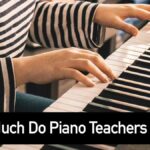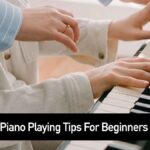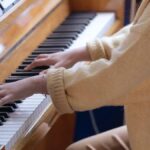Learning to play the keyboard opens up a world of musical expression and creativity. It's an exciting journey, but for beginners with disabilities, finding the right approach and resources can feel daunting. Yet, it's important to remember that music is for everyone, and with the right support, anyone can learn to play the keyboard.
Adaptive teaching methods and specialized equipment have made keyboard lessons more accessible than ever before. These advancements ensure that learners with disabilities can explore their musical talents in a comfortable and inclusive environment. Whether it's through tailored lesson plans, adaptive keyboards, or supportive software, there's a pathway for everyone to embark on their musical journey.
Understanding the Needs of Beginners with Disabilities
When diving into the world of keyboard lessons for beginners with disabilities, it's crucial to acknowledge that each student has unique needs and abilities. Recognizing these individual requirements is the first step towards crafting a supportive and inclusive learning environment. Music should be accessible to all, and by tailoring teaching methods and lesson plans, instructors can ensure that every student has the opportunity to thrive musically.
Adaptive Teaching Methods
Instructors often employ adaptive teaching methods to meet the diverse needs of their students. These methods may include:
- Visual Aids: Using large notes and colorful visuals to make reading music easier for those with visual impairments.
- Tactile Learning Tools: Incorporating textured materials to help students with physical disabilities feel the music they're playing.
- Sign Language: For students who are deaf or hard of hearing, integrating sign language into lessons can aid in understanding musical concepts and instructions.
These adaptive strategies not only make learning the keyboard more accessible but also create a learning experience that's engaging and enjoyable for students with disabilities.
Specialized Equipment
Advancements in technology have led to the development of specialized equipment designed to make playing the keyboard more accessible. Some of these innovations include:
- Adjustable Stands: Allows the keyboard to be positioned at the optimal height and angle for each student's comfort.
- Touch-Sensitive Keyboards: Requires less force to play, making them ideal for individuals with limited strength or mobility in their hands.
- Foot Pedals: Customized pedals can offer alternatives for playing certain keyboard functions, accommodating those who may not be able to use their hands traditionally.
Equipping a classroom or practice space with such adaptive instruments and devices can significantly enhance the learning experience for beginners with disabilities.
Creating an Inclusive Learning Environment
Beyond the physical aspects of learning, the atmosphere in which education occurs plays a significant role in a student's success. Teachers and instructors can create an inclusive and supportive atmosphere by:
- Celebrating small victories and milestones, showing students that progress, no matter how small, is still progress.
- Fostering a sense of community among students, encouraging peer support, and learning from each other's experiences.
- Maintaining open lines of communication with students and their families, ensuring that lessons remain responsive to each student's evolving needs.
Benefits of Adaptive Teaching Methods
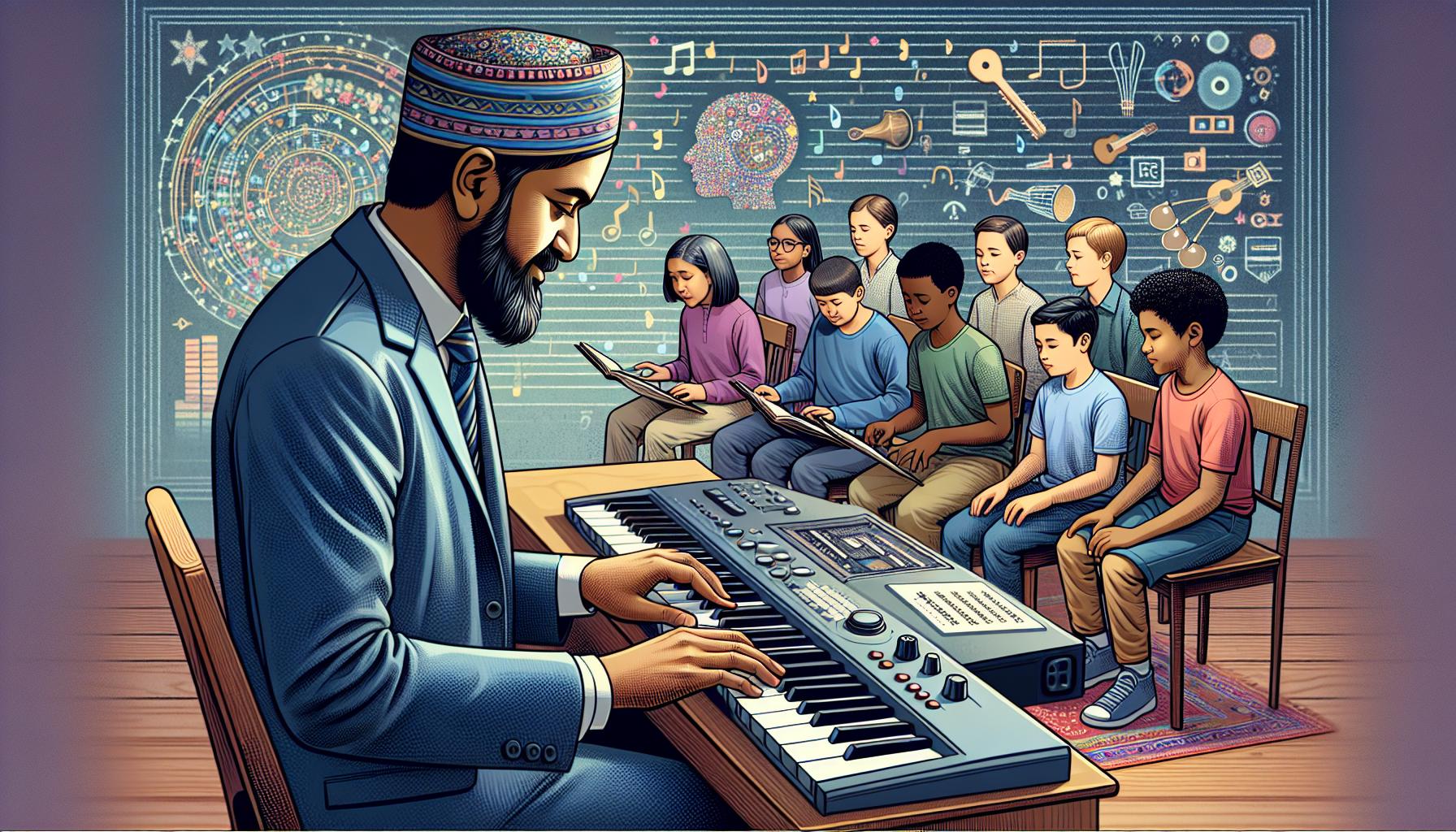
Adaptive teaching methods go beyond conventional instruction to meet the unique needs of beginners with disabilities. These methods leverage a mix of technology, specialized equipment, and personalized teaching strategies to create a learning environment where every student feels valued and understood.
One of the primary benefits of adaptive teaching is the enhanced engagement it fosters among students. Through the use of visual aids, sign language, and tactile learning tools, teachers can deliver lessons in ways that resonate with students' individual learning preferences. This not only keeps students motivated but also helps them retain information more effectively.
Moreover, adaptive methods encourage greater independence in learners. For instance, equipping a keyboard setup with adjustable stands and touch-sensitive keyboards enables students to adjust their instruments according to their physical needs, promoting self-reliance. Foot pedals modified for ease of use allow students to control various aspects of their learning experience, further fostering a sense of independence.
Accessibility is another key advantage. By incorporating specialized equipment and adaptive software, teachers can break down barriers that might otherwise hinder students' ability to fully participate in lessons. This inclusivity ensures all students have equal opportunities to explore their musical potential.
Social integration plays a crucial role in the development of beginners with disabilities, and adaptive teaching methods significantly contribute to this aspect. By creating an inclusive learning environment, students feel more connected to their peers, boosting their confidence and social skills. Celebrating achievements, no matter how small, and encouraging peer-to-peer interactions are vital components of building a supportive community.
The effectiveness of adaptive teaching methods is further underscored by their ability to accommodate a wide range of disabilities. Whether students have physical impairments that require ergonomic aids or learning disabilities that necessitate specialized instructional techniques, adaptive teaching methods can be tailored to meet these diverse needs.
| Benefit | Description |
|---|---|
| Enhanced Engagement | Utilizes a variety of learning tools to keep students motivated and improve information retention. |
| Greater Independence | Empowers students by providing them with tools and setups that promote self-reliance in learning. |
| Accessibility | Ensures all students have the opportunity to participate fully in lessons by removing physical barriers. |
| Social Integration | Fosters a sense of community and belonging, enhancing students' confidence and social skills. |
| Accommodation of Diversity | Tailors teaching methods to suit the individual needs and abilities of students with various disabilities. |
Specialized Equipment for Keyboard Lessons
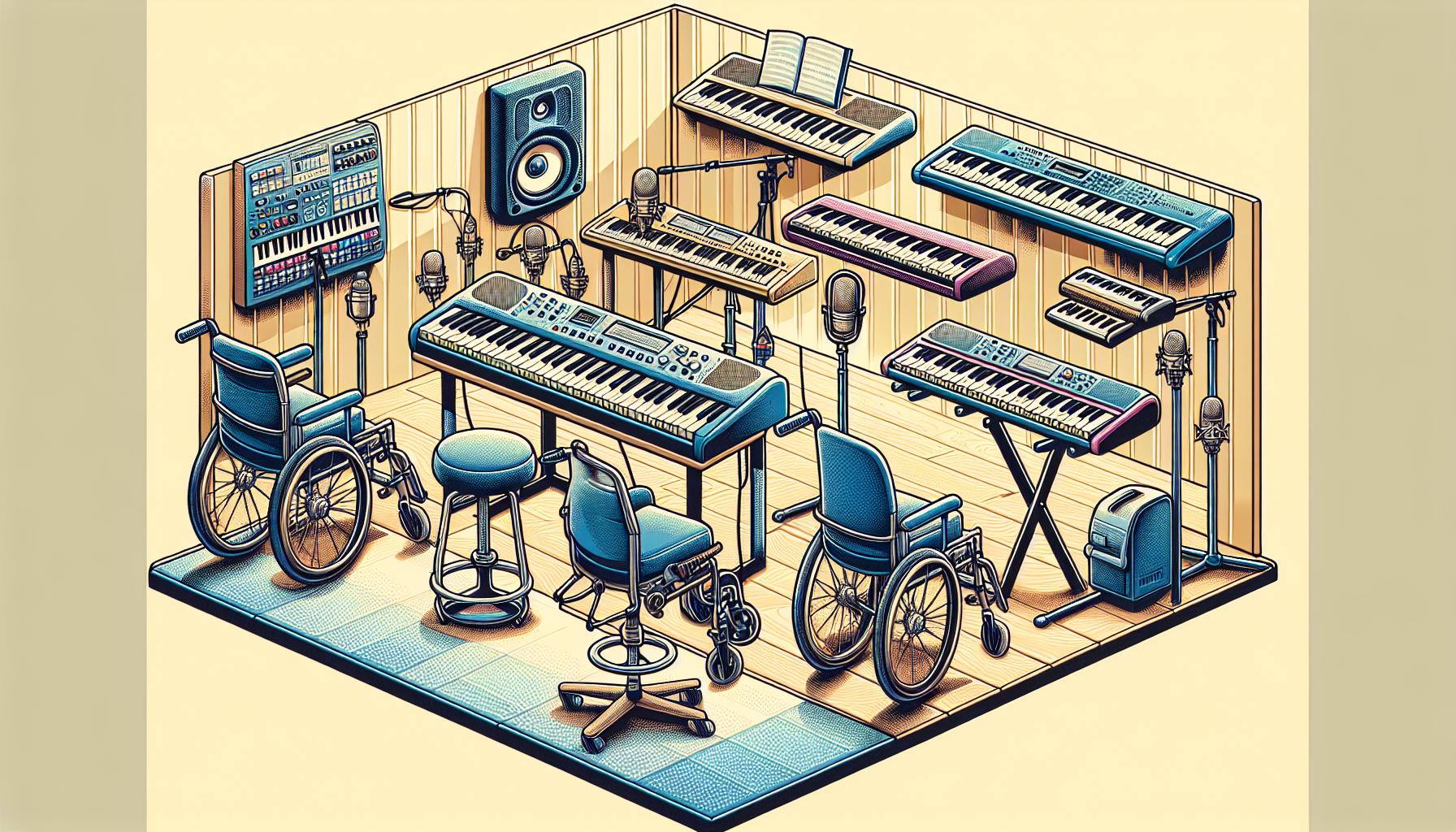
Specialized equipment plays a crucial role in keyboard lessons for beginners with disabilities, making learning both accessible and enjoyable. By incorporating adaptive tools tailored to individual needs, instructors can create an inclusive environment that accommodates everyone.
Adjustable Keyboard Stands
Adjustable keyboard stands are fundamental in ensuring comfort and accessibility. These stands allow the keyboard to be positioned at the optimal height and angle for each student, catering to those who may use wheelchairs or have limited mobility. This customization enhances focus on learning, as students won't be hindered by physical discomfort or strain.
Touch-Sensitive Keyboards
Incorporating touch-sensitive keyboards is another effective strategy. These keyboards respond to light touches, eliminating the need for forceful pressing, which can be a challenge for some students. This sensitivity promotes ease of use, especially for individuals with motor disabilities, allowing them to express themselves musically without physical barriers.
Visual Aids and Tactile Tools
- Large Print Music: For students with visual impairments, large print music can be a game-changer. This adaptation ensures that reading music is more accessible, enabling these students to participate fully.
- Tactile Markers: Placing tactile markers on keyboards helps visually impaired students locate keys more efficiently. These markers can denote specific notes or orient the student to the layout of the keyboard, fostering independence and confidence.
Adaptive Software
Adaptive software represents a leap forward in making keyboard lessons more inclusive. Software that reads aloud digital sheet music or provides interactive learning games suitable for various disabilities can significantly enhance the learning experience. Some programs are specifically designed to be compatible with assistive technologies like screen readers, ensuring that visually impaired students can navigate the software independently.
Specialized Learning Apps
Several apps are now available that cater specifically to learners with disabilities. These apps often integrate gamified learning with customizable settings, allowing for adjustments in color contrast, playback speed, and difficulty level. By making learning fun and adaptable, these apps help maintain high engagement levels among students.
Ergonomic Benches and Seating
Comfort is key when it comes to sustaining longer practice sessions. Ergonomic benches and seats support correct posture and can be adjusted to accommodate the physical needs of each student. Proper seating not only prevents fatigue but also encourages students to practice more often, as they feel physically supported.
Tailored Lesson Plans for Learners with Disabilities
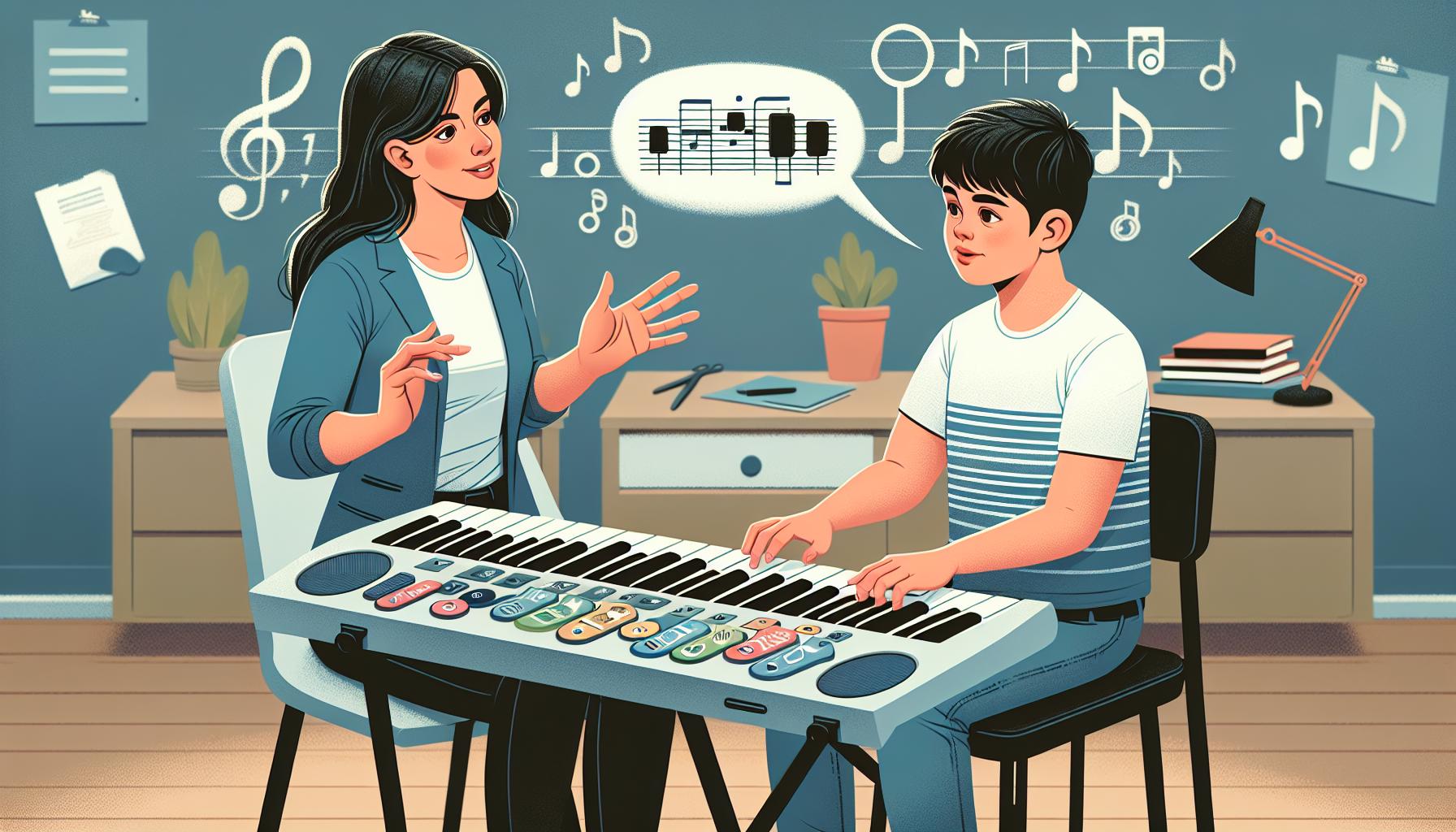
Creating an inclusive learning environment for keyboard lessons involves more than just specialized equipment. Tailored lesson plans play a critical role in accommodating the unique needs of learners with disabilities. These customized plans ensure that each student can progress at their own pace, building confidence and mastery over the keyboard.
For students with disabilities, the one-size-fits-all approach to music education falls short. This is where modified lesson structures come into play. Educators often use a combination of adaptive teaching methods and individual learning objectives to craft lessons that both challenge and support students.
- Adaptive Teaching Methods: These may include using simpler language for students with cognitive disabilities or incorporating sign language for those who are deaf or hard of hearing.
- Individual Learning Objectives: These allow teachers to set personalized goals for each student based on their specific abilities, needs, and interests.
Technology also plays a pivotal role in tailoring lesson plans. Assistive technologies such as screen readers and speech-to-text software can make learning materials more accessible. Moreover, interactive apps that offer visual and auditory cues help reinforce learning, making the process more engaging for students with learning disabilities.
One of the most effective strategies is incorporating a multisensory approach to learning. This involves engaging multiple senses to help students grasp musical concepts and techniques more effectively. For example, tactile feedback from touch-sensitive keyboards and auditory feedback from high-quality sound output can significantly enhance the learning experience for students with visual impairments.
Teachers specializing in music education for students with disabilities often have training in special education. This equips them with the skills needed to modify teaching approaches and lesson content appropriately. For instance, lessons may be structured to emphasize short, achievable objectives, enabling students to experience frequent successes. This boosts their motivation and enjoyment of music.
Moreover, the inclusion of peer interaction in lesson plans fosters a sense of community and belonging among students. Group activities designed to accommodate various disabilities can enhance social skills while providing a supportive environment for musical exploration.
Here are some examples of tailored lesson initiatives:
| Initiative Type | Description |
|---|---|
| Visual Learning Aids | Use of color-coded notes and large print music sheets for students with visual impairments. |
| Tactile Learning Aids | Incorporation of textured stickers on keyboard keys to guide finger placement for tactile learners. |
| Auditory Feedback Systems |
Conclusion
Embracing the diversity of students with disabilities in keyboard lessons opens up a world of musical exploration and expression that benefits everyone involved. By focusing on customized lesson plans and adaptive teaching methods, teachers can create a supportive and inclusive environment where all students feel valued and are encouraged to reach their full potential. The use of technology and a multisensory approach not only makes learning more accessible but also more engaging for students with different needs. With the right mindset and resources, every beginner can embark on a musical journey that enriches their lives and brings joy to those around them. Here's to making music an inclusive experience for all!
Harlan Kilstein began playing piano during covid with no piano background at all. He taught himself how to play learning what to do and what not to do.
Today he's an advanced intermediate player and can help you grow in your skills because he learned all this on his own.



